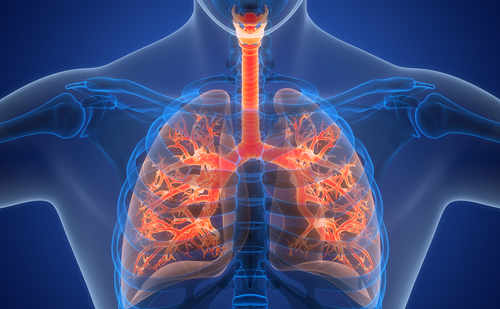Chronic obstructive pulmonary disease (COPD) is a major cause of morbidity and mortality throughout the world. COPD frequently coexists with other age-related co-morbidities,1 and is now known to be a disease of accelerated aging.2 The length of telomeres, which become progressively shorter as cells divide, has been proposed as a biomarker of aging.3 Shorter telomere length may therefore represent a useful biomarker for identifying COPD patients at increased risk for accelerated disease progression and poor outcomes.4 In an expert interview, Dr Sin discusses his recently published study investigating the relationship of telomere length of leukocytes and clinical outcomes, including health status, rate of exacerbations, and risk of mortality in individuals with COPD.5
Q. What is already known about the impact of COPD on accelerated aging?
COPD is almost unheard of below 40 years of age. The risk of COPD increases exponentially once individuals pass this age threshold, such that above age 70 years, one in three septuagenarians and beyond have COPD.6 Because COPD causes accelerated aging, patients develop multiple age-related comorbidities such as heart disease, stroke, cancer and osteoporosis.1
Q. Could you tell us a little about your recent study investigating the utility of measuring telomere length in patients with COPD?
We tested the hypothesis that telomeres, which are easily measured in blood, are biomarkers (or surrogates) of aging in COPD and most importantly whether telomeres are associated with poor outcomes for COPD patients.5 We measured the telomere length of DNA extracted from blood samples taken from 576 patients with moderate-to-severe COPD who were participants in the Macrolide Azithromycin for Prevention of Exacerbations of COPD (MACRO) study (ClinicalTrials.gov: NCT00325897). These patients were treated with azithromycin or placebo for 12 months and all were followed initially for approximately 12 months, during which time their overall health status and COPD exacerbations were recorded. They were then followed for a further 29 months to assess mortality.5
Q. What were the findings of this study?
We found that even though the average age of the patients in our study was 66 years, their biological age based on telomeres was 15–20 years older (in their 80s). We also found that patients with short telomeres, and thus of older biological age, were more likely to experience exacerbations and nine times more likely to die than those who had long telomeres (thus younger biological age).5
Q. What were the effects of azithromycin treatment on COPD patients with short telomeres?
The good news was that those patients who took azithromycin were protected from developing exacerbations when they had short telomeres.5
Q. What is likely to be the impact of these findings on COPD treatment and what further studies are planned?
We need to see whether these findings can be replicated in other settings. If we can reproduce these findings, we may be able to use blood telomeres, which are easy to measure as a simple blood test, to identify patients at high risk (biologically older) and place them on azithromycin to protect them against exacerbations.












